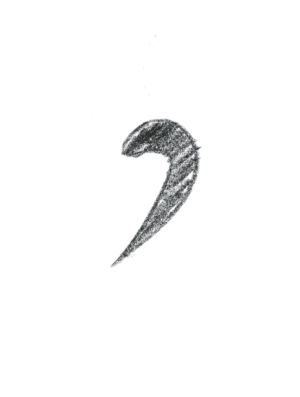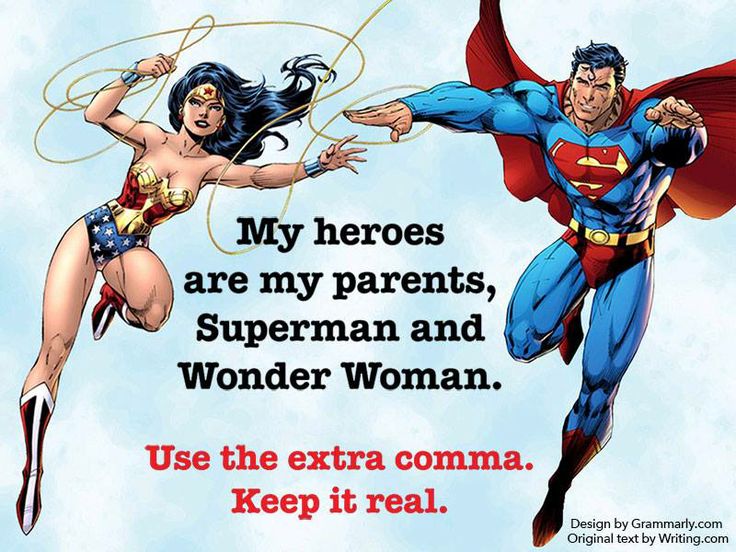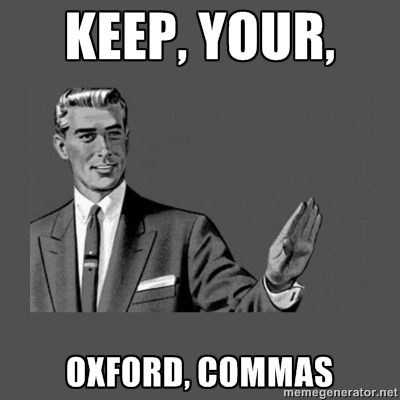The serial comma may go by many names, but those who are familiar with it have only one opinion about it.
Too bad we don’t all have the same opinion.
The serial comma—or series, Oxford, or Harvard comma, as you prefer—is the comma that comes before the conjunction in a series:
Sean ate pancakes, bacon, and eggs for breakfast.
Writers and editors love to argue over whether to use the serial comma. It’s great fodder for memes, too:
Those in favor of the serial comma argue that it avoids misunderstandings. Those against it point out that the serial comma can cause just as much confusion. And, they note, styles that don’t use the serial comma often make the exception when not using it would cause a misreading or the series items are complex:
Sean ate pancakes, bacon, and ham and eggs for breakfast.
The winner of the argument seems to be those who use it, as most of the style guides I work in call for it. Those that don’t use the serial comma are generally news-related guides. There’s a claim that newspapers do this to save space and ink, but I’ve never heard any style guides make that claim. Besides, how much space and ink would a paper really save with a few commas? (If someone’s done the math, I’d love to see it.)
I prefer the serial comma, but that’s all it is: a preference. I’m used to seeing it, and I like it. Yet some of my clients don’t use it, and I have no trouble editing that way.
Most of the time, the serial comma is simply a style preference. Occasionally, its presence or absence changes meaning. In those cases, you can turn to your editor; making that kind of call is a given in copyediting.
So which style guides call for the serial comma and which don’t? Here’s the rule for a few of the major style guides:
| Style Guide | Serial comma | No serial comma |
| The Associated Press Stylebook | x | |
| The Canadian Style | x | |
| The Chicago Manual of Style | x | |
| New Oxford Style Manual | x | |
| Publication Manual of the American Psychology Association | x |
What if you’re following a style that uses the serial comma and you don’t want to? If you’re writing for a publication or a book publisher, follow their rule. It’s part of what they’re paying you for.
Indie authors make their own style choices, however. Be a rebel and don’t use it! Just let your editor know your decision so they don’t undo your choice.
A version of this article originally ran on Copyediting.com on May 7, 2013.





But, to be a rebel in how I begin a sentence, the serial comma is useful in pacing the reader, making something more pleasant to read, adding an almost lyrical beat. It’s not all strict mechanics.
True. That’s another post all on its own.
I have issues with the serial comma. When I write for one publisher, the editors vary on their preferences of use. I try to write using the Chicago Manual of Style because most publishers are more familiar with it.
That’s frustrating, Stephanie! If the publisher doesn’t have a set style, then the editors should be willing to change the style on submitted writing. That’s too small a detail to worry about at the writing stage.